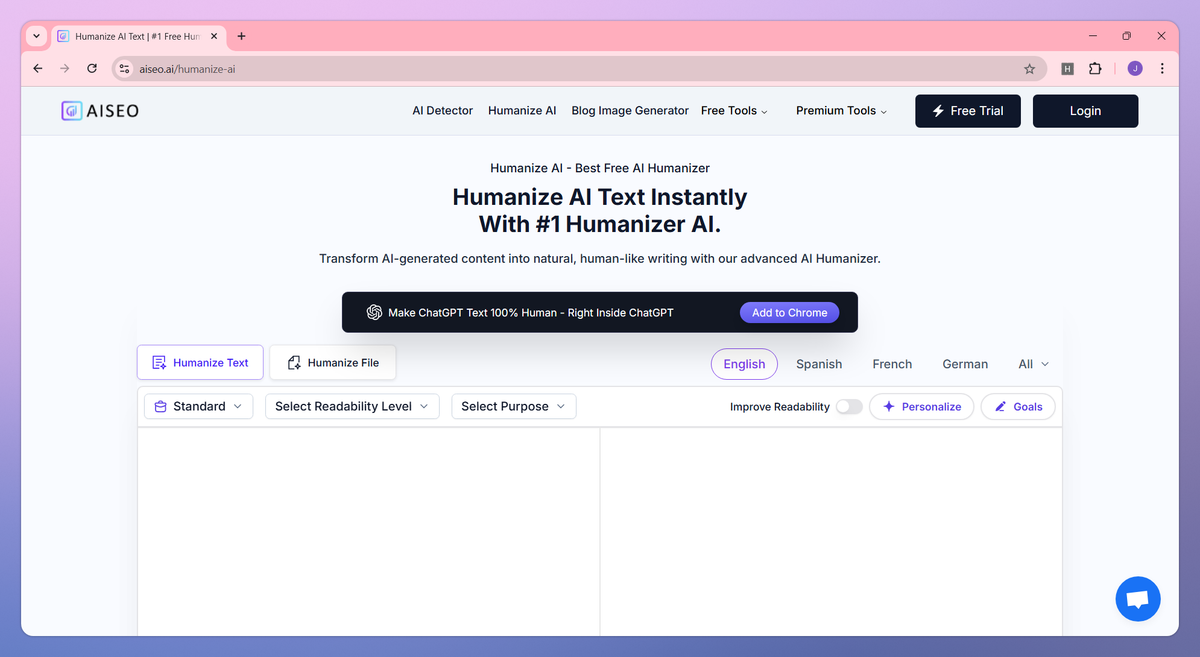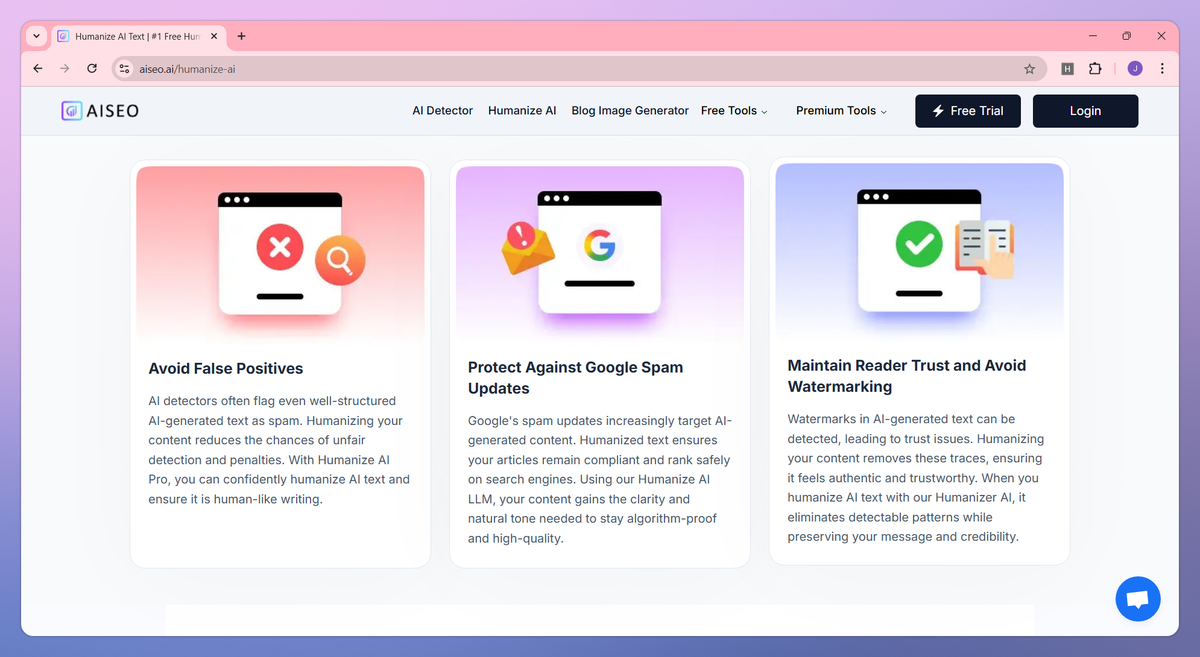


What is Humanize AI?
Humanize AI is a text transformation tool designed to convert AI-generated content into natural, human-like writing. It bypasses AI detectors like Turnitin and GPTZero, offers multiple humanization modes including Standard and Academic formats, and supports over 25 languages to help students, content creators, and professionals produce authentic-sounding content that passes plagiarism checks and avoids detection penalties.
What sets Humanize AI apart?
Humanize AI differentiates itself with customizable readability levels that adjust content complexity for specific audiences, from high school to doctorate levels. This targeted approach is particularly helpful for educators and writers who need to match their content's complexity to their readers' comprehension levels while maintaining the original message integrity. Its ability to process up to 50,000 characters in one session while eliminating robotic tone and awkward phrasing makes it indispensable for professionals managing large content volumes.
Humanize AI Use Cases
- Bypass AI detectors
- Convert robotic AI text
- Academic paper submissions
- Professional content creation
- SEO-friendly articles
Who uses Humanize AI?
Features and Benefits
- Transforms AI-generated content into natural, human-like writing that eliminates robotic tone and awkward phrasing.
Natural Text Conversion
- Modifies content to pass major AI detectors like GPTZero and Turnitin without changing the original message.
AI Detection Bypass
- Offers multiple humanization modes including Standard, Shorten, Expand, and Simplify to adapt content for specific purposes.
Customization Options
- Processes content in over 25 languages including Spanish, French, German, and Italian.
Multilingual Support
- Tailors content to different audience levels from high school to doctorate, ensuring appropriate complexity for target readers.
Readability Adjustment
Humanize AI Pros and Cons
No user feedback available to determine genuine benefits
Cannot assess positive aspects without review content
Unable to identify praised features from provided sources
Missing data prevents evaluation of user satisfaction
No user feedback available to determine genuine drawbacks
Cannot assess negative aspects without review content
Unable to identify common complaints from provided sources
Missing data prevents evaluation of user concerns








